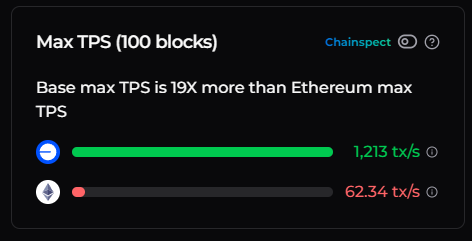Ethereum raised the gas limit to 60 million, and the expansion path is gradually becoming clear
In the past, many people's impression of ETH's TPS (Transfers Per Second) was still stuck at "15 transactions per second". However, with continued protocol optimization, Ethereum's current TPS peak has increased to around 60, a 4x increase.

Although this change is related to continuous optimization over the years, the most direct reason for this is the simple and effective adjustment of the GAS Limit from the 15 million to the 36 million limit.
Recently, ETH is about to raise the GAS limit to 60 million again.
What is GAS Limit?
Each of us using ETH needs to pay gas as a transaction fee. Gas Limit, as the name suggests, is the upper limit of the amount of gas that can be held in each block. The higher this limit, the more transactions a block can process, and the faster the network will be.
Of all the scaling paths, increasing the gas limit is arguably the most immediate way to do so.
More critically, this adjustment does not require a hard fork, as the Gas Limit is a dynamic parameter in Ethereum that PoS nodes can fine-tune under existing protocol rules.
In other words, the protocol itself allows producers of each new block to adjust the gas limit in the range of ±1/1024 compared to the parent block, which is itself part of the consensus mechanism. This is also very different from Bitcoin's mechanism of fixing the block size at 1MB.
Therefore, increasing the gas limit does not require a system upgrade or code modification, as long as the PoS nodes continue to "signal" support at block time, the network can gradually adopt this change. There are currently more than 1 million validators across the Ethereum network, and as long as a certain percentage of support is reached, the network will automatically transition to the new gas cap and ensure the compatibility of all nodes.
So far, about 15% of validators have chosen to support a setup that supports 60 million gas. Ebunker has also been supported, and as an unmanaged node service provider, we are always focused on balancing the performance of the Ethereum network with decentralization. Since this is a voluntary process, a significant portion of nodes remain in an older version (e.g., 30 million) configuration.

Increasing the Gas Limit does not mean that the PoS node can make more money, in fact, it is likely to earn less.
Since the launch of EIP-1559, Ethereum's Base Fee has been directly burned, and validators can only earn tips that users actively add. Once the gas limit is increased, it means that the processing power of the entire network is increased, transaction congestion is reduced, and the pressure to compete for tips is also reduced, and the tip amount will naturally decrease. So, to some extent, the increase in the gas limit actually reduces the income of validators, and the amount of ETH burned further increases.
Therefore, under such an incentive mechanism, the validators who still choose to support the 60 million gas limit can be said to be selfless.
In addition, there has recently been a controversial proposal from the community, EIP-9698. The proposal proposes to increase the gas limit from 36 million to 3.6 billion over the next four years, with the goal of increasing Ethereum's TPS to about 2,000, aiming straight at the current high-performance chain Solana. However, this idea is clearly somewhat radical.
Theoretically, as long as the hardware performance of the node is strong enough, the gas limit can indeed be continuously raised. But the reality is that with over 1 million active validators, the Ethereum network needs to juggle a wide range of participants. However, the number of validators of some other high-performance public chains is only at the scale of 100, and the gap between the two is as high as 10,000 times.
